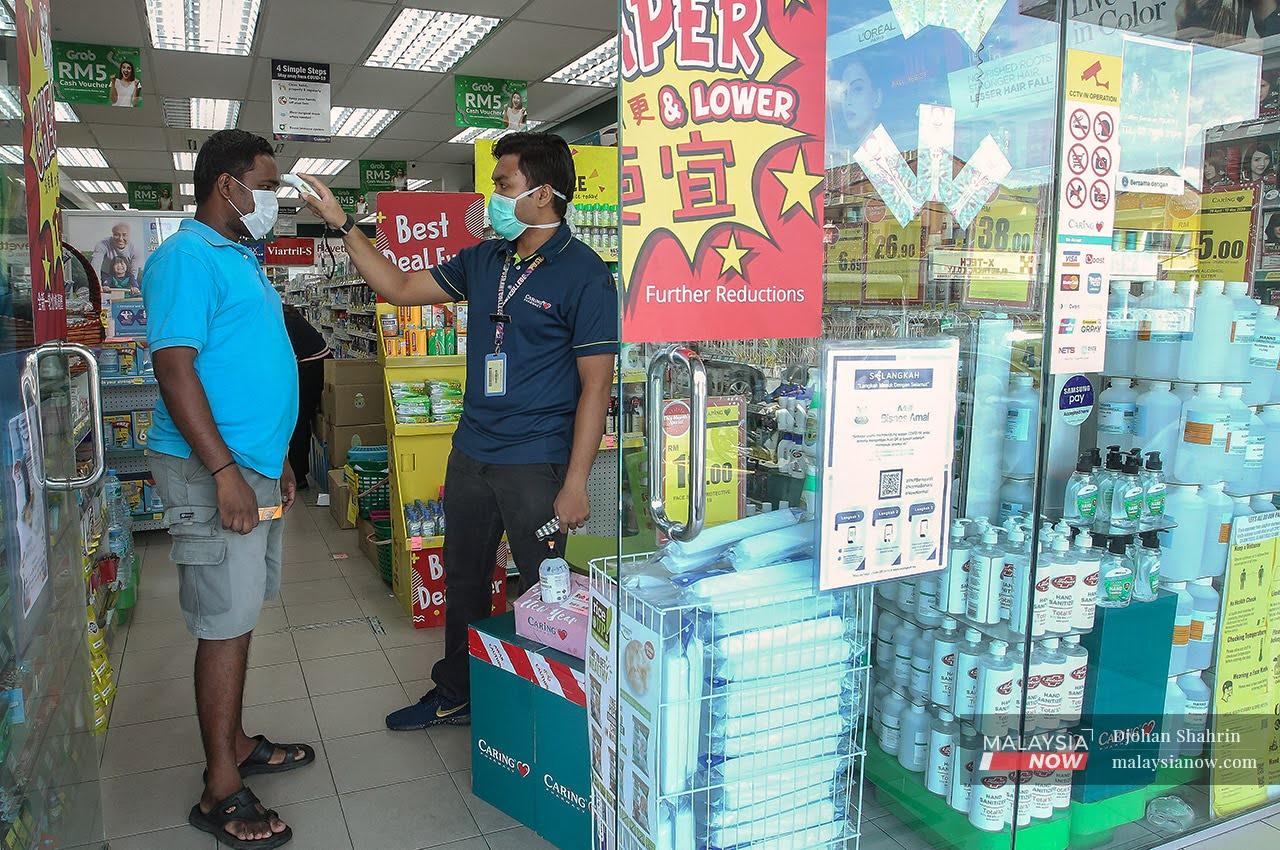Thermometer sales red hot in the pandemic
MalaysiaNow did a quick scan of prices and profits in the infrared temperature reader business.
Just In
Populations all over the world are by now familiar with the procedure they must follow when entering business and commercial buildings in this topsy-turvy year.
As 2020 kicked off and governments were just beginning to get their heads around what was happening to the world, one of the first signs of a fightback was having handheld infrared temperature readers held up to the foreheads of people by a security guard before they were waved through into the mall, office or station.
Nearly 12 months further down the Covid-19 line, procedures have become somewhat more sophisticated.
Even the more befuddled of people confidently scan the MySejahtera QR code with their smartphones and bend into the handsfree infrared temperature reader, relaxing as the green lights flash and the beep declares them fit to enter and join the rest of the healthy.
The security guard barely looks up from his own phone to wave people into the mall anymore.
As temperature screening became a requirement in daily life, the demand for thermometers surged around the world, following the advance of the virus.
Market research company Mordor Intelligence reports that the Asia-Pacific body temperature monitoring market has, not unexpectedly, boomed since governments began requiring business owners to invest in non-contact infrared (IR) thermometers.
These devices, unlike traditional mercury thermometers, are faster, non-invasive, and measure the skin temperature rather than internal body temperature.
MalaysiaNow performed a simple survey to find out how much money thermometer manufacturers and suppliers are making in the boom.
Traditional thermometers which go in the mouth or ear show pretty much no increase in sales, being hardly ideal for use with multiple members of the public by untrained security personnel.
Non-contact IR devices are either handheld or handsfree.
Both types have made big money for their predominantly Chinese manufacturers and local suppliers and retailers.
As with everything, thermometers bought from brick-and-mortar stores and pharmacies are more expensive than those bought online.
The MalaysiaNow survey shows the offline store price of handheld IR thermometers ranges from RM150 to RM250. Most of these are from high-end brands like Neutrovis, Microlife, and Uright.
Handsfree thermometers are more expensive, ranging from RM180 to RM300.
Online, handheld IR thermometers can be found for as little as RM16, while handsfree IR thermometer sets are available for just RM70.
A pharmacy based in Shah Alam told MalaysiaNow their handsfree thermometer sets cost RM290 while the handheld is RM150. They sell about 10 of each in a month, generating at least RM4,000 turnover.
However, a local online platform sells an average of 4,000 handsfree units a month at RM100 each, earning them RM400,000. In the same period, they sell up to 2,000 handheld units for RM25 each, making them around RM50,000.
A major manufacturer in China reports selling 150,000 handheld thermometers per month at RM36 each, making RM5.4 million.
As for the more expensive handsfree instruments, a manufacturer told MalaysiaNow they sell 150,000 a month for RM60 each, generating RM9 million a month.
It may not rely on mercury rising anymore but the body-temperature-reading business will likely continue to do well until Covid-19 is declared no longer a threat.
Subscribe to our newsletter
To be updated with all the latest news and analyses daily.
